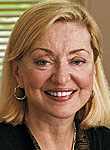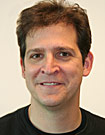Embracing the description “beyond category” — Duke Ellington’s favorite expression of ultimate praise — the six-member ensemble Rhythm & Brass opens the 2010-11 Lawrence University Artist Series Saturday, Sept. 25 with its boundary-busting repertoire with an 8 p.m. performance in the Lawrence Memorial Chapel.
Tickets, at $22-20 for adults, $19-17 for seniors and $15-17 for students, are available through the Lawrence Box Office in the Music-Drama Center, 420 E. College Ave., Appleton or by calling 920-832-6749.
Since its founding in 1993, Rhythm & Brass has defied the constraints of time, geography and culture by incorporating influences as divergent as Josquin Des Prez, Pink Floyd, John Coltrane, Johann Sebastian Bach and Duke Ellington. Performing on trumpets, horn, piano, trombone, tuba and percussion, Rhythm & Brass blends the commonality of those disparate styles into a single concert experience.
Marty Erickson, who teaches tuba in the Lawrence conservatory, has performed with Rhythm & Brass on occasion. He said the group’s musical flexibility is one of the things that make them special.
“They are all truly world-class musicians in their own right,” said Erickson. “By adding a percussionist to the standard brass quintet instrumentation and occasionally moving their French horn player to piano allows the group to present a huge variety of music in their programs. And they do it all with amazing artistry. Concert-goers can expect to hear a huge variety of styles, everything from classical transcriptions and Beatles arrangements to early jazz funk and more.”
Described by the New York Times as being “startling without striking a note of pretension,” Rhythm & Brass made its Carnegie Hall debut in 1994 with celebrated jazz trumpeter Randy Brecker. It has since appeared at the New York Brass Conference, the Raphael Mendez Brass Institute and Kentucky’s Great American Brass Band Festival. Rhythm & Brass was one of the guest performers in July at the International Trumpet Guild’s annual conference in Sydney, Australia.
In addition to performing together, the sextet’s members —Wiff Rudd and Rex Richardson, trumpet, Charles Villarrubia, tuba, Alex Shuhan, horn and piano, David Gluck, percussion and Thomas Brantley trombone — have all toured nationally with various other groups.
The group’s discography includes “More Money Jungle…Ellington Explorations,” which celebrates American musical icon Duke Ellington, “Time in September,” which includes a commissioned work by two-time Grammy Award-winning composer Maria Schneider and “Christmas Time is Here,” which drew critical acclaim as one of the most creative holiday season recordings.

